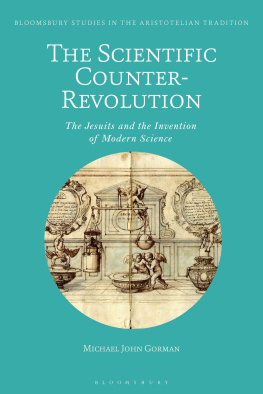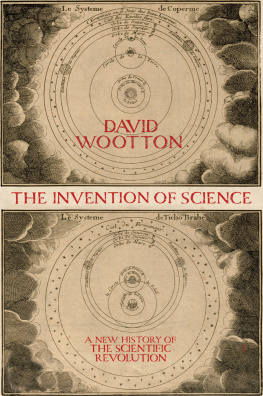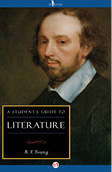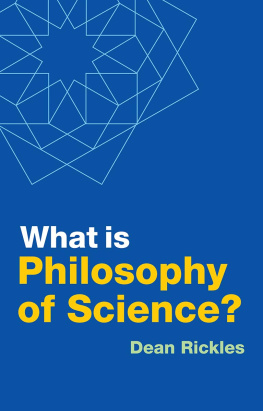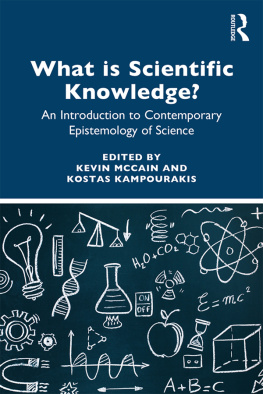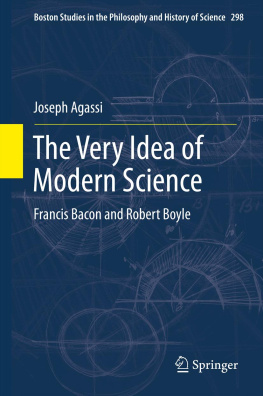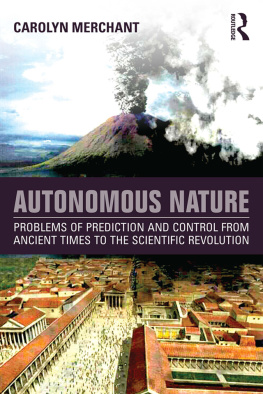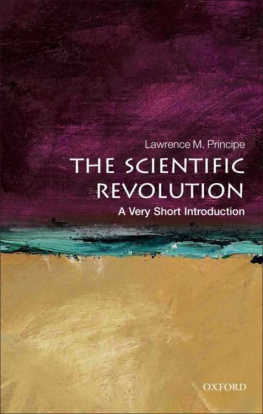Recent Titles in Greenwood Guides to Historic Events, 1500-1900
The Atlantic Slave Trade Johannes Postma
Manifest Destiny David S. Heidler and Jeanne T. Heidler
American Railroads in the Nineteenth Century Augustus J. Veenendaal
Reconstruction Claudine L. Ferrell
The Spanish-American War Kenneth E. Hendrickson, Jr.
The American Revolution Joseph C. Morton
The French Revolution Linda S. Frey and Marsha L. Frey
The French and Indian War Alfred A. Cave
The Lewis and Clark Expedition Harry William Fritz
The Second Great Awakening and the Transcendentalists Barry Hankins
The Age of Napoleon Susan P. Conner
The American Civil War Cole C. Kingseed
The Scientific Revolution and the Foundations of Modern Science
WILBUR APPLEBAUM
Greenwood Guides to Historic Events, 1500-1900
Linda S. Frey and Marsha L. Frey, Series Editors

Applebaum, Wilbur.
The scientific revolution and the foundations of modern science / Wilbur Applebaum.
p. cm(Greenwood guides to historic events, 1500-1900, ISSN 1538-442X)
Includes bibliographical references and index.
ISBN 0-313-32314-3 (alk. paper)
1. ScienceHistory. 2. Science, Renaissance. I. Title. II. Series Q125.A54 2005
509.4'09'031dc22 2004027859
British Library Cataloguing in Publication Data is available.
Copyright 2005 by Wilbur Applebaum
All rights reserved. No portion of this book may be reproduced, by any process
or technique, without the express written consent of the publisher.
Library of Congress Catalog Card Number: 2004027859 ISBN: 0-313-32314-3 ISSN: 1538-442X
First published in 2005
Greenwood Press, 88 Post Road West, Westport, CT 06881
An imprint of Greenwood Publishing Group, Inc. www.greenwood.com
Printed in the United States of America
The paper used in this book complies with the Permanent Paper Standard issued by the
National Information Standards Organization (Z39.48-1984).
Contents
Illustrations
2.1. | The Sun revolves uniformly | |
2.2. | Angle a at the equant | |
2.3. | A stars different angles while the Earth revolves around the Sun | |
2.4. | Tycho Brahe seated among his instruments and assistants at Uraniborg | |
2.5. | Thomas Digges diagram of the stars | |
2.6. | The Sun in one of the foci of an elliptical orbit | |
2.7. | The frontispiece of Keplers Rudolphine Tables (1627) | |
2.8. | An Aristotelian, a Copernican, and an open-minded individual from Galileos Dialogue | |
2.9. | Descartes celestial vortices, from Principles of Philosophy | |
3.1. | The sines of the angle of incidence and refraction | |
3.2. | Newtons experiment on refraction of white sunlight through a prism | |
3.3. | Otto von Guerickes air pump | |
3.4. | Robert Boyles air pump | |
4.1. | Medical students observing a dissection | |
4.2. | The first of the plates in De fabrica on human muscles | |
4.3. | From Borellis De motu animalium (On the Motion of Animals) | |
4.4. | From Harveys De motu cordis, based on Fabricis lectures | |
4.5. | Robert Hookes microscope | |
4.6. | Microscopic study of an insect | |
4.7. | Reproduction in frogs | |
5.1. | Christiaan Huygens diagram of his pendulum clock | |
5.2. | The frontispiece of Thomas Sprats History of the Royal Society | |
Francis Bacon (1561-1626) | |
Nicolaus Copernicus (1473-1543) | |
Rene Descartes (1596-1650) | |
Galileo Galilei (1564-1642) | |
William Harvey (1578-1657) | |
Johannes Kepler (1571-1630) | |
Isaac Newton (1642-1727) | |
Andreas Vesalius (1514-1564) | |
Series Foreword
American statesman Adlai Stevenson stated that We can chart our future clearly and wisely only when we know the path which has led to the present. This series, Greenwood Guides to Historic Events, 1500-1900, is designed to illuminate that path by focusing on events from 1500 to 1900 that have shaped the world. The years 1500 to 1900 include what historians call the Early Modern Period (1500 to 1789, the onset of the French Revolution) and part of the modern period (1789 to 1900).
In 1500, an acceleration of key trends marked the beginnings of an interdependent world and the posing of seminal questions that changed the nature and terms of intellectual debate. The series closes with 1900, the inauguration of the twentieth century. This period witnessed profound economic, social, political, cultural, religious, and military changes. An industrial and technological revolution transformed the modes of production, marked the transition from a rural to an urban economy, and ultimately raised the standard of living. Social classes and distinctions shifted. The emergence of the territorial and later the national state altered mans relations with and view of political authority. The shattering of the religious unity of the Roman Catholic world in Europe marked the rise of a new pluralism. Military revolutions changed the nature of warfare. The books in this series emphasize the complexity and diversity of the human tapestry and include political, economic, social, intellectual, military, and cultural topics. Some of the authors focus on events in U.S. history such as the Salem Witchcraft Trials, the American Revolution, the abolitionist movement, and the Civil War. Others analyze European topics, such as the Reformation and Counter Reformation and the French Revolution. Still others bridge cultures and continents by examining the voyages of discovery, the Atlantic slave trade, and the Age of Imperialism. Some focus on intellectual questions that have shaped the modern world, such as Darwins Origin of Species or on turning points such as the Age of Romanticism. Others examine defining economic, religious, or legal events or issues such as the building of the railroads, the Second Great Awakening, and abolitionism. Heroes (e.g., Lewis and Clark), scientists (e.g., Darwin), military leaders (e.g., Napoleon), poets (e.g., Byron), stride across its pages. Many of these events were seminal in that they marked profound changes or turning points. The Scientific Revolution, for example, changed the way individuals viewed themselves and their world.
The authors, acknowledged experts in their fields, synthesize key events, set developments within the larger historical context, and, most important, present a well-balanced, well-written account that integrates the most recent scholarship in the field.
The topics were chosen by an advisory board composed of historians, high school history teachers, and school librarians to support the curriculum and meet student research needs. The volumes are designed to serve as resources for student research and to provide clearly written interpretations of topics central to the secondary school and lower-level undergraduate history curriculum. Each author outlines a basic chronology to guide the reader through often confusing events and a historical overview to set those events within a narrative framework. Three to five topical chapters underscore critical aspects of the event. In the final chapter the author examines the impact and consequences of the event. Biographical sketches furnish background on the lives and contributions of the players who strut across this stage. Ten to fifteen primary documents ranging from letters to diary entries, song lyrics, proclamations, and posters, cast light on the event, provide material for student essays, and stimulate a critical engagement with the sources. Introductions identify the authors of the documents and the main issues. In some cases a glossary of selected terms is provided as a guide to the reader. Each work contains an annotated bibliography of recommended books, articles, CD-ROMs, Internet sites, videos, and films that set the materials within the historical debate.
Next page

